Pets in the President's House
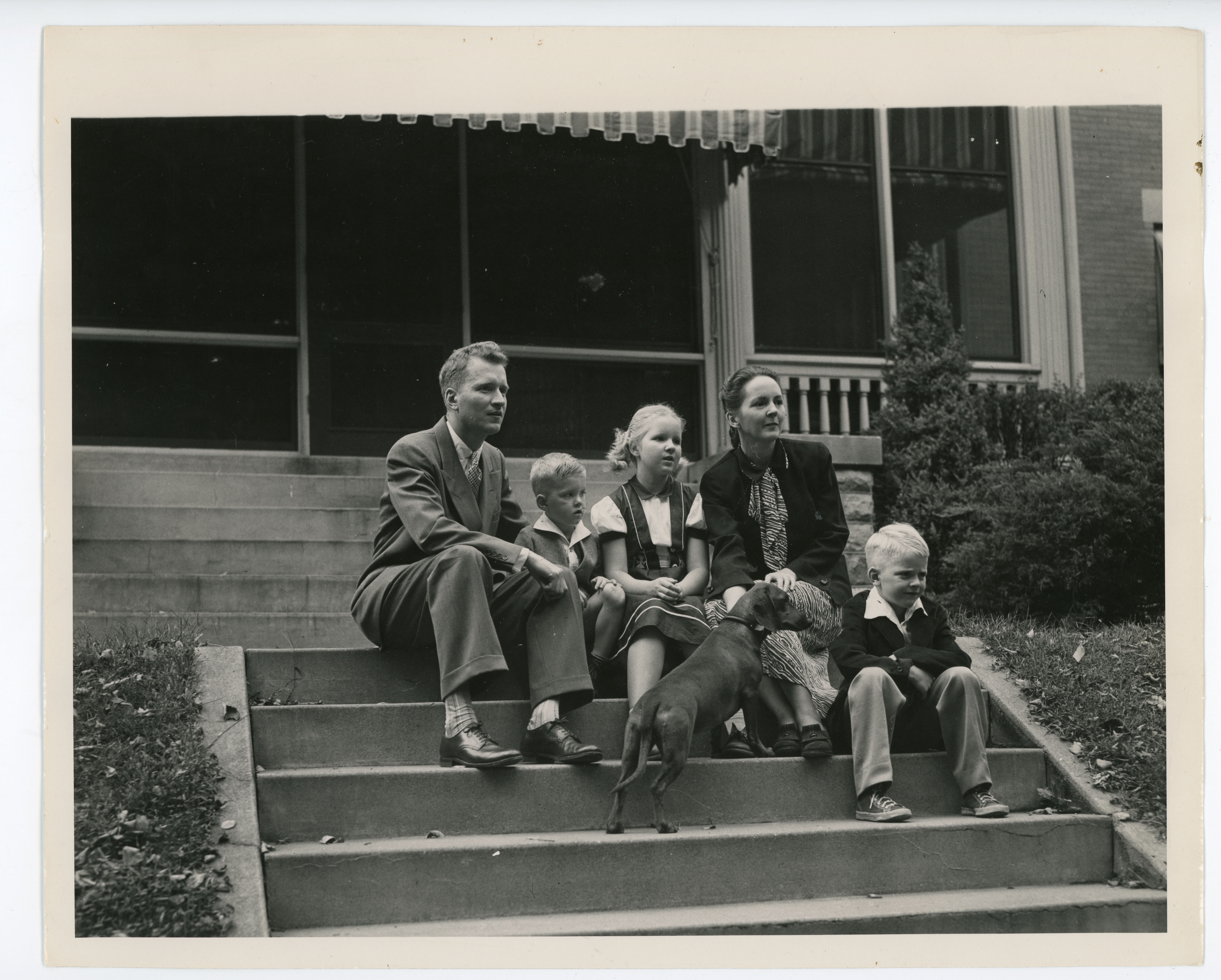
Introduction
People and animals have lived together intentionally for thousands of years. In some cases the arrangement was distinctly one-sided; in other cases both animals and people benefitted. In the earliest days of the domestic living arrangement, animals found an easy source of food in the scraps that people discarded. The people were probably looking at the animals themselves as sources of food, but also as companions in the hunt, as controllers of vermin, and as primitive alarm systems against unwelcome human and animal intruders. These early motivations for living together have not completely disappeared. However, over the centuries, both people and animals have also come to include the sheer pleasure of companionship in the relationship equation.
Almost no matter what their circumstances, people find a way to keep companion animals. For example, just about all of the Presidents of the United States, actively engaged in matters of great consequence, have kept pets. President Theodore Roosevelt had a White House menagerie of dogs, cats, goats, guinea pigs, snakes, and birds. President Franklin Roosevelt had his Scottish terrier Fala. President Gerald Ford had his golden retriever Liberty. The Clintons had a cat named Socks.
Principal Gilchrist and President Seerley
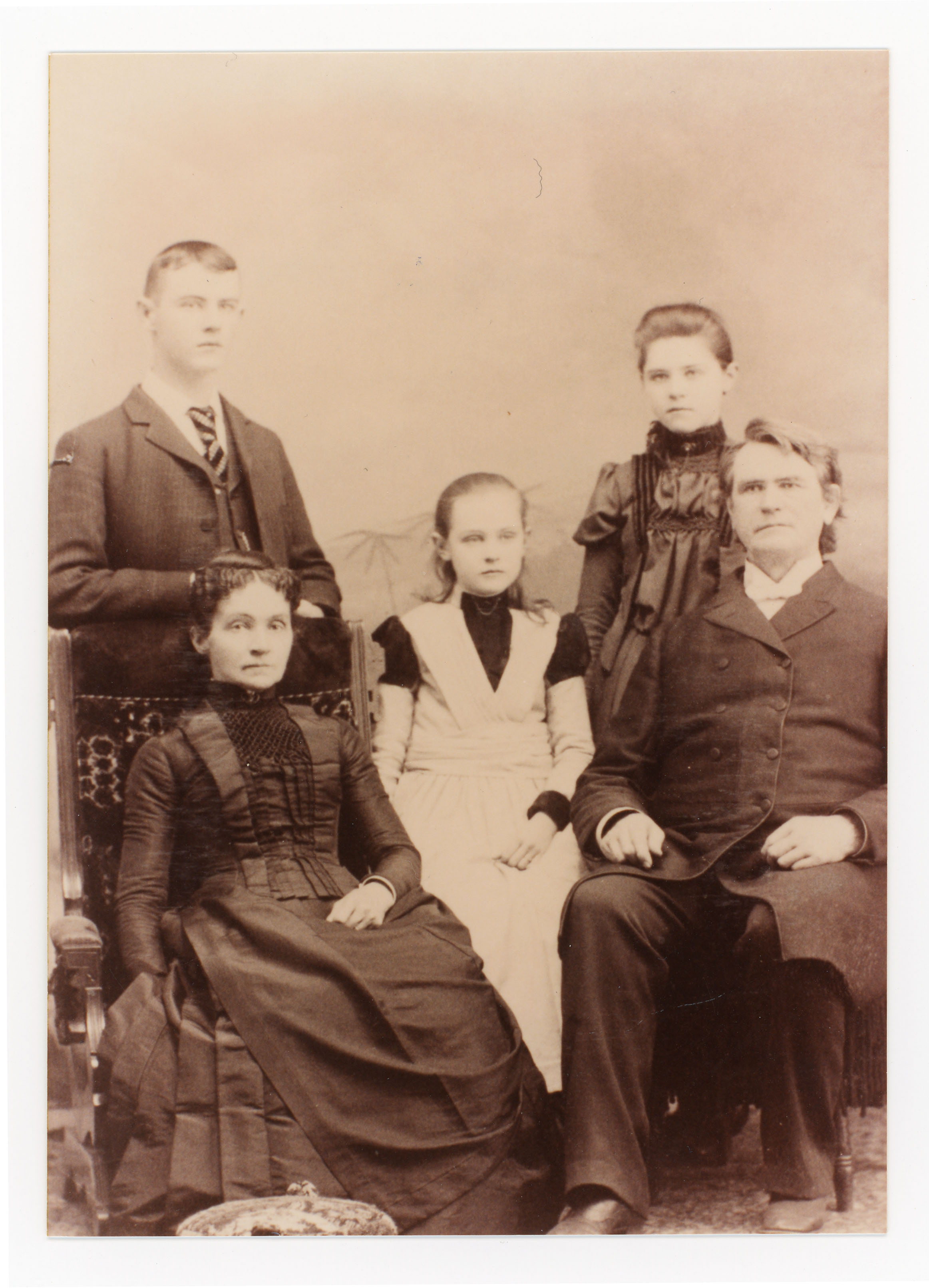
Records indicate that most of the presidents of the University of Northern Iowa have also had pets in their campus homes. Since the school opened in September 1876, the University of Northern Iowa has provided housing on campus for its chief executive officer and his family. Until 1890, that housing was located in one of the two classroom buildings: initially in Central Hall and then in Old Gilchrist Hall. The first chief executive officer, Principal James Cleland Gilchrist, served from 1876 through 1886.
He, his wife, and at least three of their children lived in an apartment in Central Hall from 1876 until 1883, when they moved into an apartment in the new classroom building, later named Gilchrist Hall in honor of Principal Gilchrist. The Gilchrist family lived in that building until Principal Gilchrist resigned in 1886. It seems unlikely that the Gilchrists were able to have pets in their classroom building apartment.
Homer Horatio Seerley succeeded Principal Gilchrist. President Seerley, who served from 1886 through 1928, also had a young family when he began his service. During the Gilchrist administration, the size of the school's faculty and staff was quite small. Principal Gilchrist could not ordinarily leave campus at the end of the day or on weekends to enjoy his own family exclusively. Rather, he needed to keep a close personal, paternal eye on the students of the school, most of whom lived on campus. Students in those days were as young as sixteen years of age. Many were immature, at least compared to the level of maturity of today's students. Before they came to school in Cedar Falls, many students had seldom left the county in which they were born. Consequently, they often needed fatherly advice from the principal as well as motherly advice from the principal's wife.
When Principal Gilchrist was keeping track of only two hundred students, this arrangement worked reasonably well. But after President Seerley had been in charge for only a few years, the enrollment of the school had grown to over five hundred students. Growing enrollment meant that the school needed more space for classes in the classroom buildings. At the same time, the President needed privacy in which to raise his family as well as relief from around-the-clock student supervision. Consequently, in order to provide more classroom space, the Board of Trustees decided to move the president's family out of Gilchrist Hall. Simultaneously, they decided to build a freestanding house on campus for the president and his family. This would be the red brick building, currently called the Honors Cottage, in the northeast part of campus.
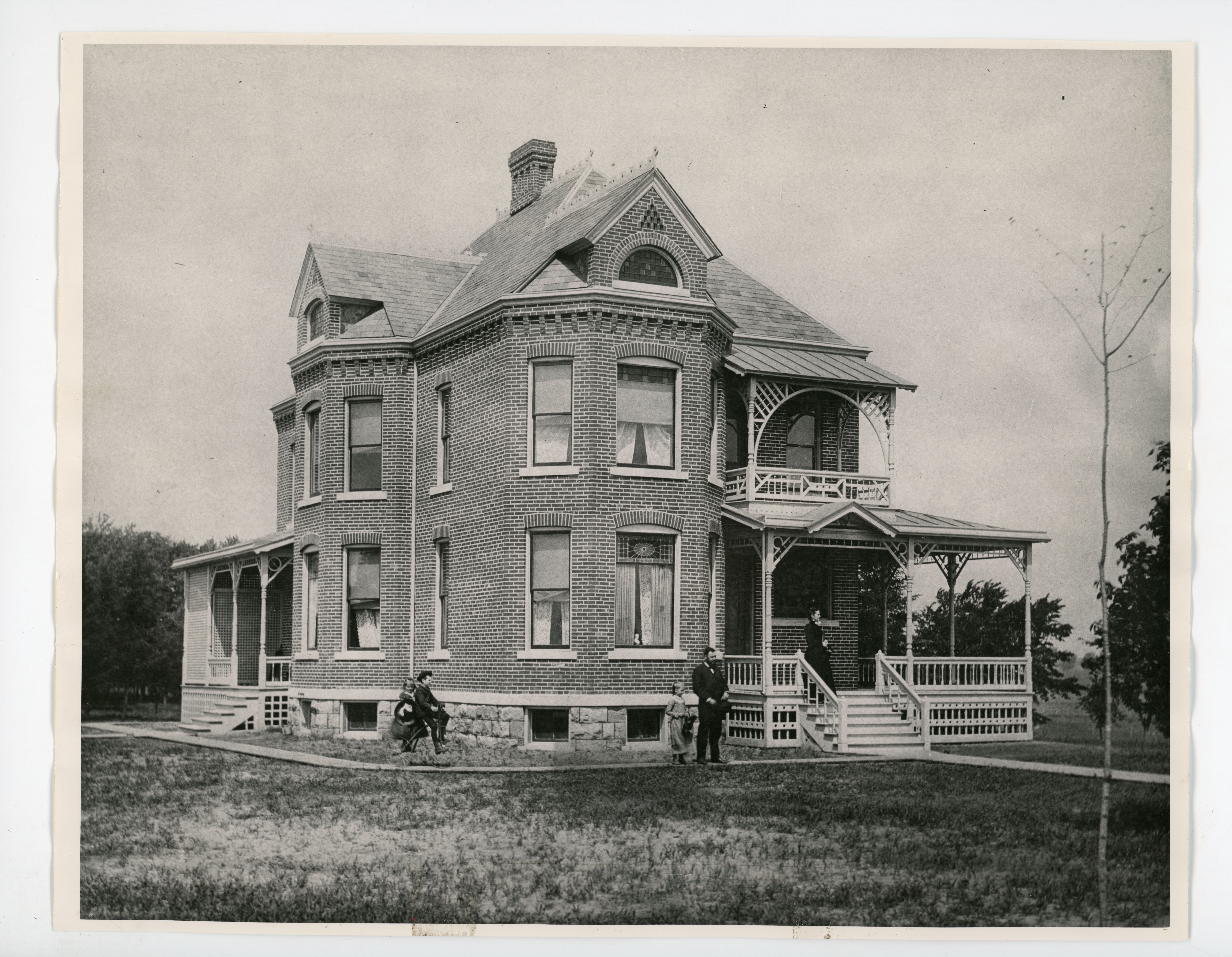
With a house at least somewhat removed from the classroom buildings, President Seerley was able to offer his family a more normal life. When the Seerleys moved into the President's Cottage in 1890, they had three children: Clement, Esther, and Helen. Their last child, Marion, was born in 1892, after they had moved into the new house. There is no record that the Seerleys had pets. In those days people were more casual about their pets. They believed that pets were not only companions, but that they also served some of their original domestic animal functions. A dog was expected to have at least minor guard duties, and a cat was expected to control mice and rats. The animals also tended to live in shelters outside of the house rather than on the living room furniture. President Seerley was born and raised on a farm near South English, Iowa, so he certainly had experience with all kinds of domestic animals. He was also a devoted and kindly family man. It seems likely that if his children, and later his grandchildren, wanted pets, they would have had them.
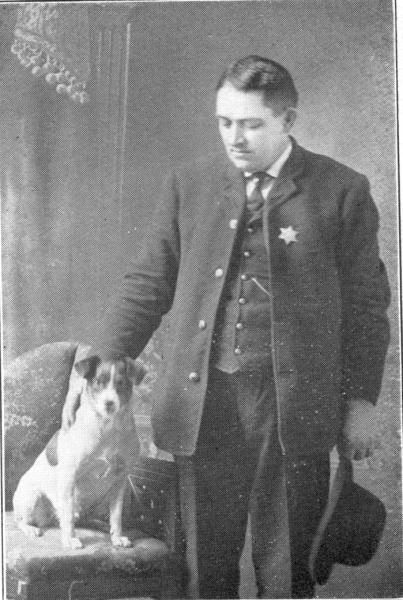
By the time that the Seerleys moved from the President's Cottage and into the new President's House in 1909, their children were older. But grandchildren were on the way within the next few years. One grandchild, Homer Culley, fondly remembered visiting his Seerley grandparents. Mr. Culley, who was actually born in the President's House in 1915, enjoyed running around the big house and the entire campus. While Mr. Culley did not mention pets in his reminiscences, it would not be surprising if there were a dog or cat to play with at his grandparents' house.
Whether or not the Seerleys had a pet, students at the beginning of the twentieth century were certainly familiar with one particular campus dog. James W. Shields was the school's night watchman from about 1900 through at least 1907. His job was to patrol the campus and all of its buildings every night to see that doors were locked and that things were secure. He also made sure that young men from town who were visiting their student girlfriends left campus on time and in good order. Mr. Shields' constant companion was a little terrier named Zeno.
The student newspaper said that Zeno was "a sociable little creature in the day time but a Pinkerton sleuth when he and Jim take charge of Iowa Normal." The newspaper further stated that Zeno was "fidelity animated, he refuses to obey anyone except his master, is ever on the alert for wanderers, his sharp senses have made him one of the most popular dogs in Iowa." Zeno was reputed even to have warned students to stay on the sidewalks and off of the lawn.
Presidents Latham and Price
Following President Seerley's retirement in 1928, Orval Ray Latham was selected as president. His family included his wife, their daughter Shirley, and their son Raymond. Both Shirley and Raymond were in their late teens when the family came to campus. Again, there is no record that the Lathams had pets. President Latham was an exceptionally busy and business-like man, who re-organized and strengthened the administrative structure and the faculty of the school against the trying background of the Great Depression. Perhaps he had no time for pets.
However, if the Lathams had no pets, their next door neighbors certainly did. After President Seerley moved into what is now the President's House in 1909, the former President's Cottage had been used as a hospital and a pre-school. When he retired in 1928, President Emeritus Seerley and his wife Clara moved back into the President's Cottage, where they then resided until their deaths: President Seerley in 1932 and Mrs. Seerley in 1934. After they died, the house became the home of Professor Martin Nelson. Professor Nelson served as Dean of the Faculty, an administrative position similar to today's Executive Vice President and Provost. The Nelsons had a bulldog named Queenie, who was something of a college mascot.
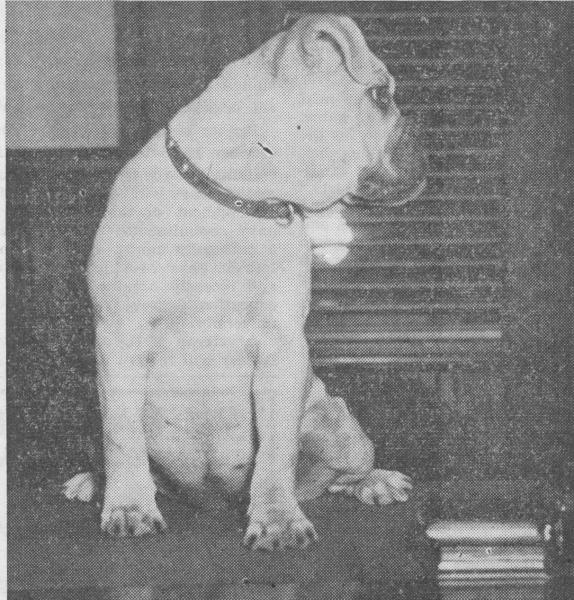
An article in the student newspaper described Queenie as "a close observer of college activities". In the days when many dogs ran loose outside of the house, Queenie had the disconcerting habit of lying down in the middle of College Street. Cars, buses, and even streetcars stopped and waited until Queenie decided to get out of the way. Queenie lived a long life, especially in a day when veterinary care was not as advanced as it is today. She died in March 1942 at the age of thirteen years and seven months. Dean Nelson buried her.
The Nelsons did not wait long to get another dog. In the summer of 1942 they went to Savanna, Illinois, to purchase another bulldog, whom they named Queenie II. Dean Nelson said that he was discouraging Queenie II from spending as much time on College Street as her predecessor had done.
After President Latham died in 1940, Malcolm Poyer Price was named president. He moved into the President's House with his wife Mary, their fifteen-year-old daughter Nancy, and their eighteen-month-old son John. Probably by about 1943, the Prices acquired a little terrier named Pal. Even though she left Cedar Falls to attend Cornell College in 1942, Nancy Price recalls Pal as a "polite and affectionate young fellow". She says that Pal was her brother John's beloved companion.
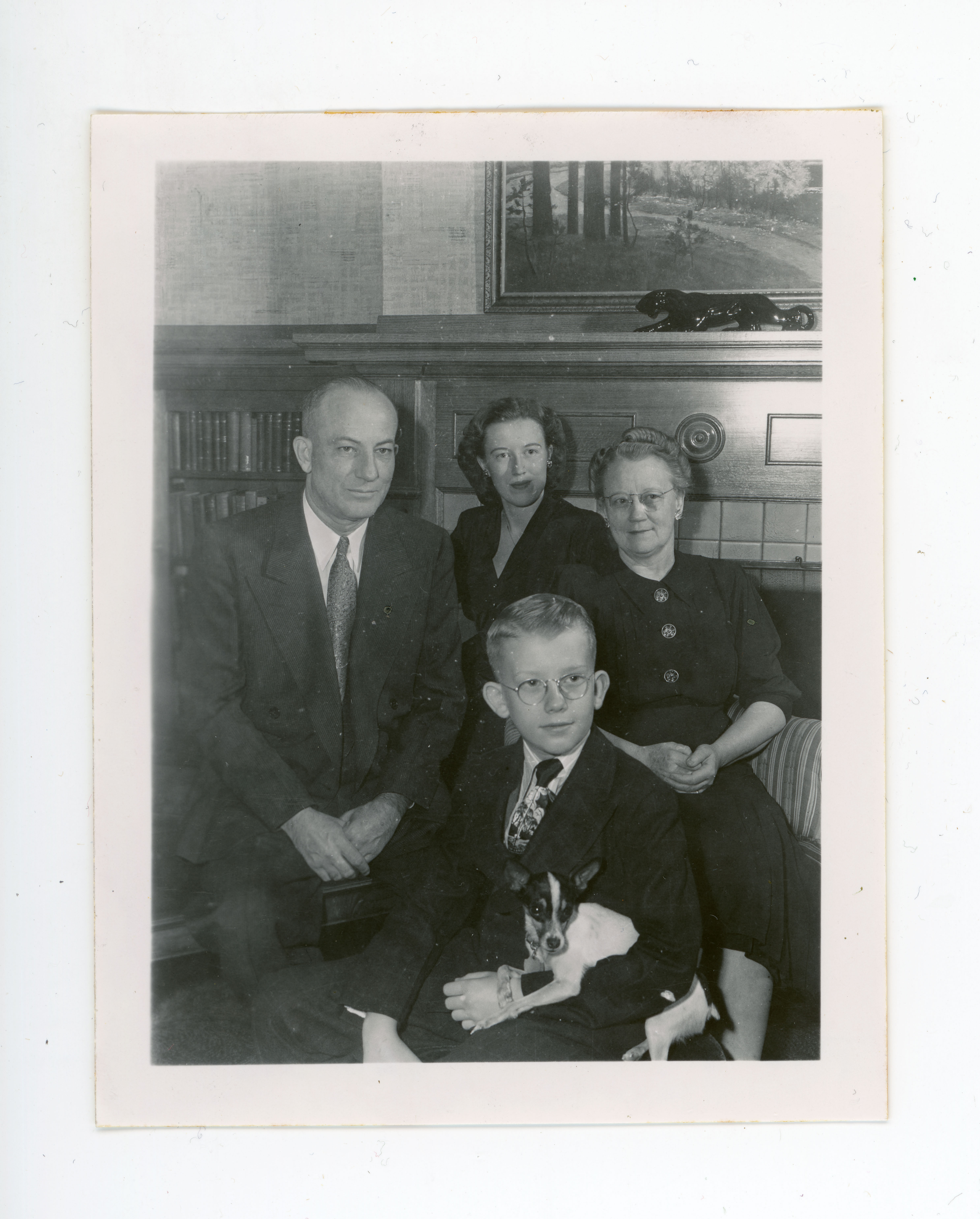
John Price still has strong and fond memories of Pal. In a recent note, John Price said that the Price family actually had two dogs by that name. The first Pal wandered off or was taken by someone in about 1945 or 1946, so the family acquired another dog, whom they also named Pal. Both Pals were toy fox terriers from a farm near Traer. Mr. Price stated simply, "Pal was a little pal." But he went on to say:
Pal II had a long life, moving with us to the little house on Olive Street after dad resigned in 1950. After years of drafty winters in the "big house," he loved to stretch out under a register of our forced-air furnace on Olive. Pal's mission in life was to guard us and the house---quite a job for a very small dog and a very big house. He managed to make friends with the college maintenance men who came and went, but was highly suspicious of any new person, and would follow them very closely until he was certain that they were there on official business.
My best friend Bill and I discovered a small door under the basement stairs [in the President's House]. It opened to one end of a dark, dank tunnel that ran under the back sidewalk to the old Administration Building. It carried steam and water pipes, and electric lines. There were lights, but they turned on from the far end. Summoning courage, Bill and I connected together every extension cord we could find, put a light at the end, and started to explore. We pushed Pal ahead of us, so if there was a monster in there, it would get him first. He was not amused. Our calculations for the required length of the cord were not very accurate, and one pull too many suddenly plunged us into darkness. I can't remember who made it back to our entry point first, but I rather think it was Pal.
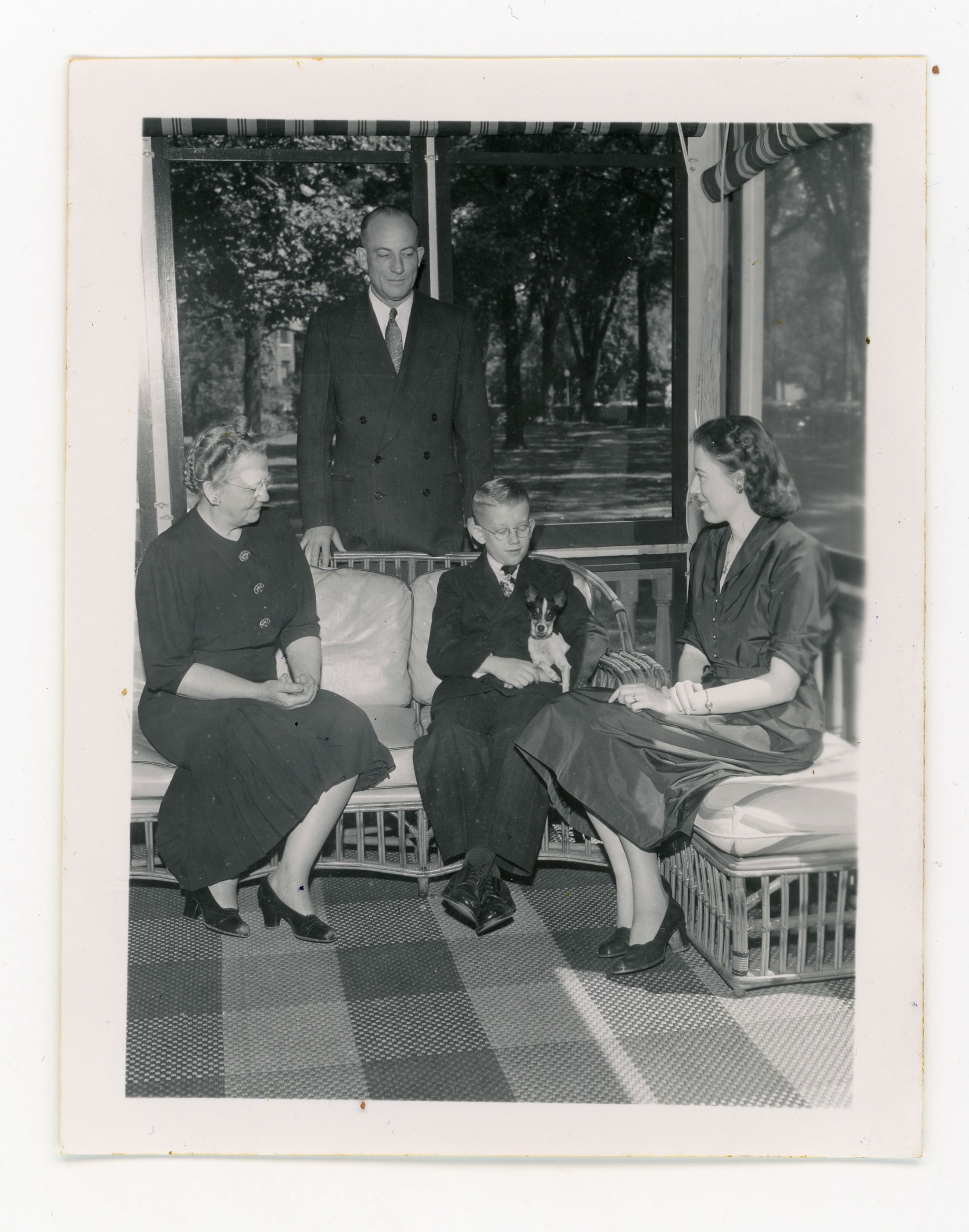
According to John Price, Pal II lived well into the late 1950s and provided companionship to Malcolm and Mary Price even after John went to college.
Presidents Maucker and Kamerick
President Price resigned in 1950 and joined the Teachers College education faculty. James William Maucker was selected to succeed him. President Maucker's family included his wife Helga, their sons Robert (3 years old) and James (7 years old), and their daughter Ann (10 years old).
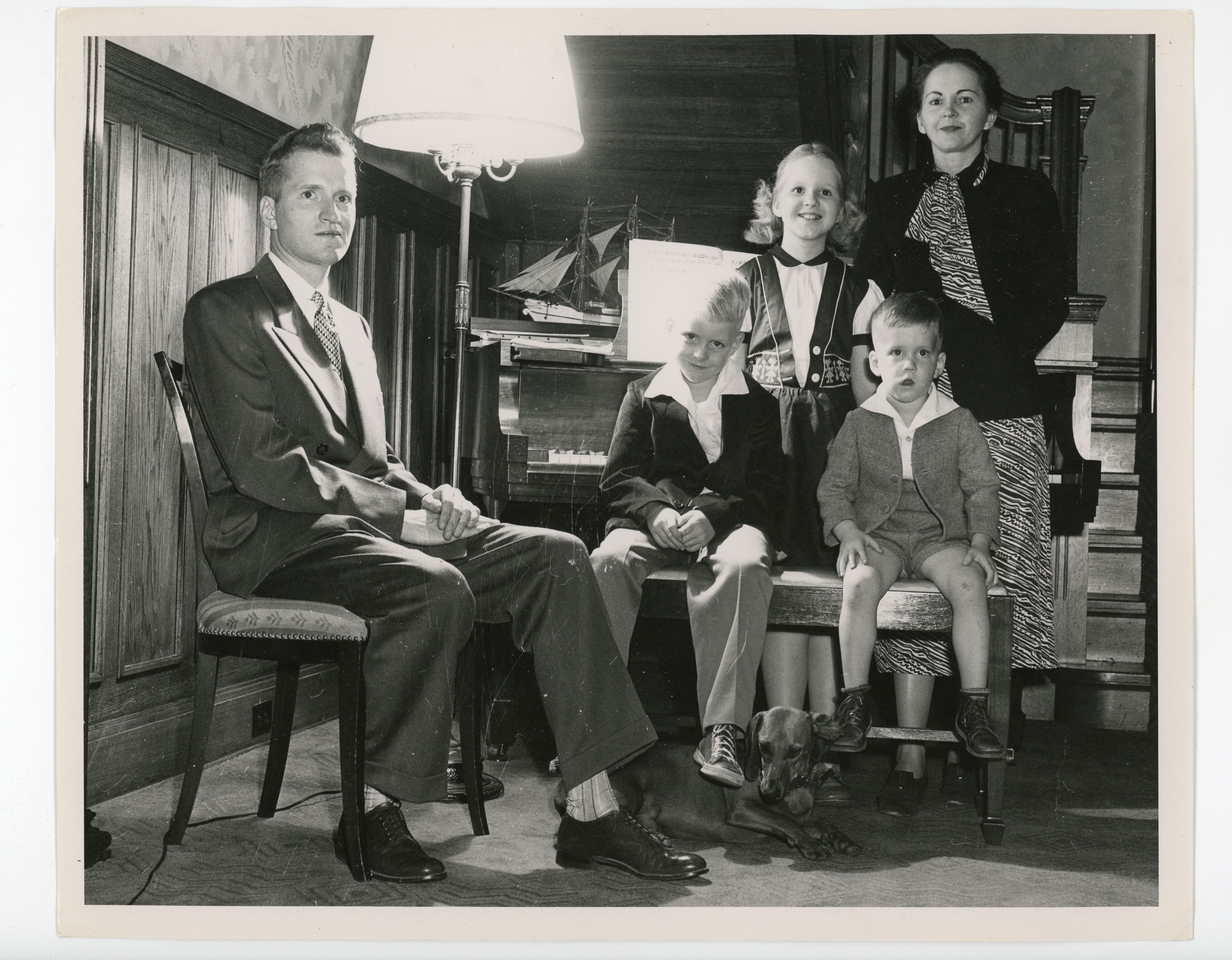
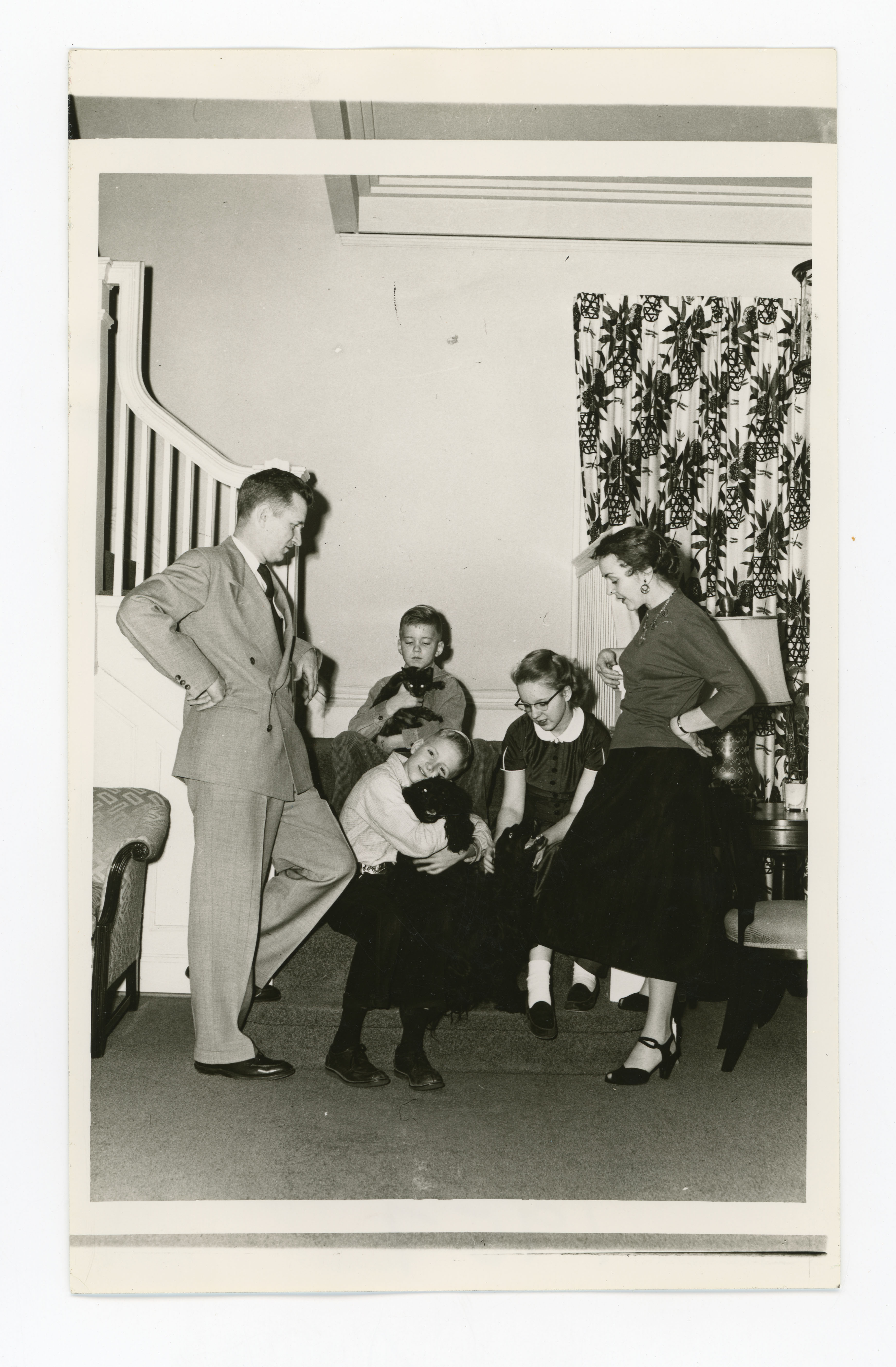
When the Mauckers moved into the President's house, they had a dog named Biddy. President Maucker's daughter, Ann Maucker King, recalls that the family had lived on a quiet residential street across from a park in Missoula, Montana, where her father had served as Dean of Education at the University of Montana. Unfortunately, Biddy did not adjust to life on a busy street. She was hit and killed by a car at the intersection of 23rd and College Street just a few weeks after the family moved to Cedar Falls.
Shortly after Biddy's death, the Mauckers acquired two black cocker spaniel puppies that they named Tinker and Tootle. Sometime after the puppies arrived, the Mauckers acquired a cat named Pooh. Ann Maucker King recalls that the cockers "roamed the campus together for the next 18 or 19 years. If they followed us somewhere on campus and we came home a different way, they would wait for us a long time." She said that Tinker and Tootle were extremely loyal and patient. The Mauckers later had another cat named Tigger. The Maucker children also had hamsters, who, as hamsters will, produced more hamsters. Mrs. King recalls that the children once rescued a bird that had fallen from a tree. Despite their efforts to nurse the bird to better health on the upstairs porch of the President's House, the bird did not survive.
President Maucker resigned in 1970. John Joseph Kamerick succeeded him. When they moved into the house, President and Mrs. Kamerick had six children: Maureen (21), Michael (19), Sheila (17), Kathleen (16), Eileen (12), and Megan (4). With the three older children away at school, only the three younger children spent much time at the house. The Kamericks brought a year old Irish setter, Seamus, with them. Given the names of the Kamerick children, an Irish setter seems like a natural fit. They also had a calico cat named Callie.
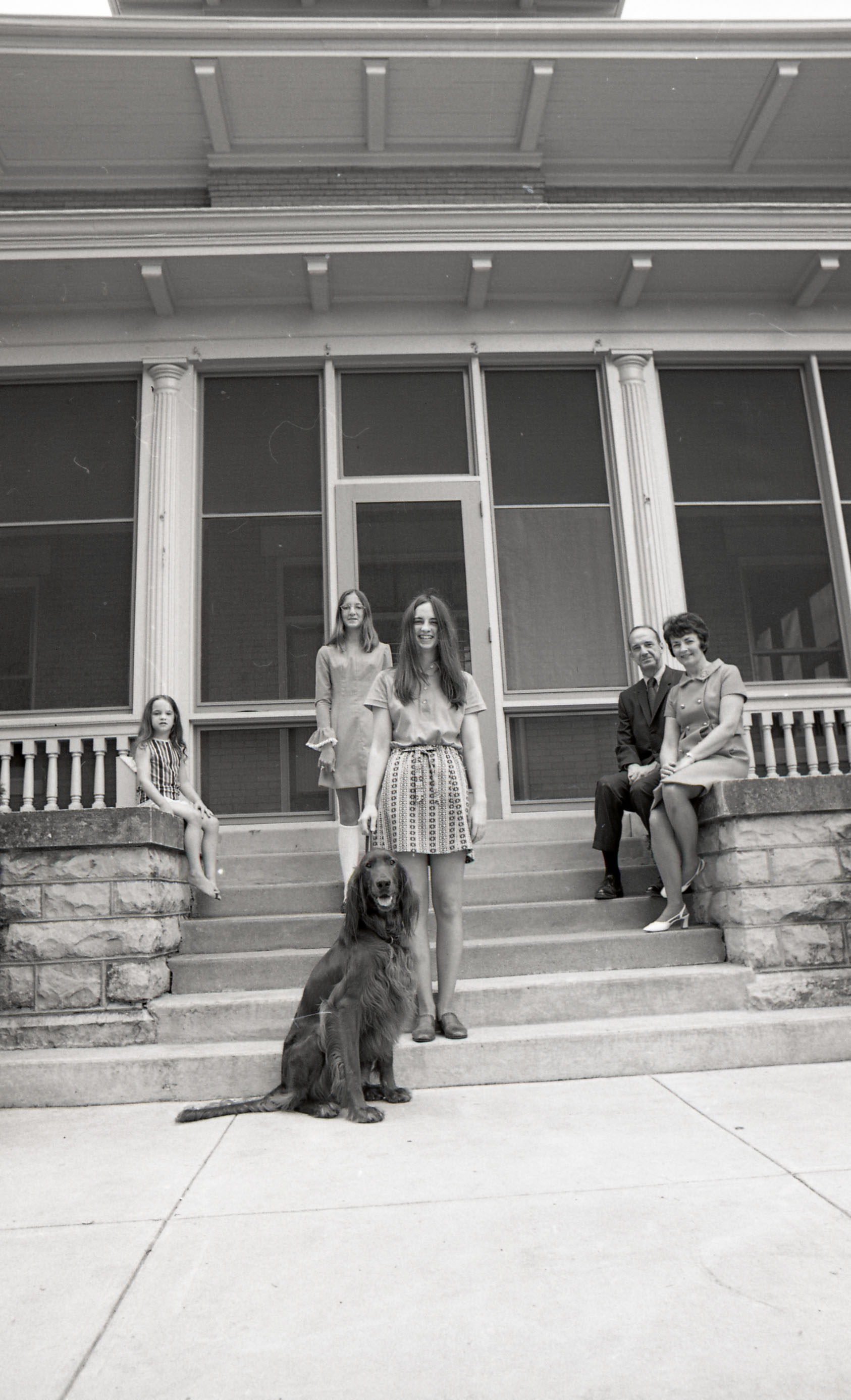
At some point, the Kamericks acquired a second Irish setter, Kerry. Providing appropriate shelter for the two dogs raised a mild, short-lived controversy. In 1979, the steam pipe that fed heat to the President's House experienced a leak. That pipe also fed the then non-working radiators in the garage behind the President's House. The garage had been built in 1933. Given the temperamental nature of automobile starting systems in the 1930s, radiators had been installed at that time to make it easier for the president to get his car started on a cold winter day. In 1979, at a time when the United States was experiencing the so-called energy crisis, university physical plant employees were called in to fix the steam line and restore full heat to the President's House. Even though the work was aimed at making necessary repairs to the line feeding heat to the President's House, several of the physical plant employees were upset that it appeared to them that the university would be heating a garage in order to provide warm shelter for Seamus and Kerry. They made their complaints public. A facilities coordinator at the President's House recalls that several media outlets arrived and attempted to provoke Seamus and Kerry to bark for the cameras. The coordinator had to rescue the setters from the unwanted attention in their outdoor kennel. President Kamerick was out of town when the controversy arose. When he learned about the events, he immediately asked that the radiators in the garage be turned off and then removed. The controversy faded quickly. With a bit more understanding and restraint, it should probably not have happened at all. The writer of this essay remembers Seamus and Kerry as typical, joyful Irish setters. They were beautiful dogs with boundless energy, who, with red hair streaming behind them, loved to dash around campus and send squirrels scampering up trees.
Presidents Curris and Koob
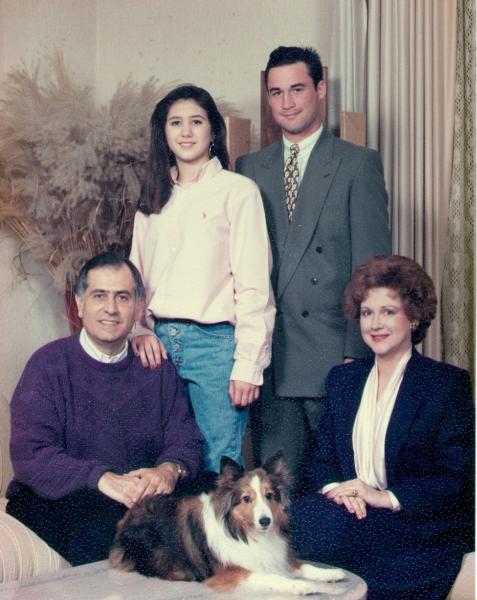
President Kamerick resigned in 1983 and then taught in the Department of History for several years. Constantine William Curris succeeded him. He moved into the President's House with his wife, Jo Hern Curris, their son Robert (13), and their daughter Elena (5). In the fall of 1985, the Curris family acquired a sheltie puppy from a Waterloo breeder. Elena Curris named the puppy Peppermint. She and Peppermint became close friends.
President Curris has fond memories of Peppermint. He remembers him as a quiet, well-behaved little dog, who enjoyed long walks around campus. Those pleasant walks were sometimes interrupted by the clattering of skateboards on Maucker Union. For some reason, those sounds frightened Peppermint and he would take off running for the President's House. President Curris also recalls that Peppermint liked snow and even enjoyed riding on a sled with Elena. When President Curris resigned in 1995 to go to Clemson University, Peppermint went with the family.
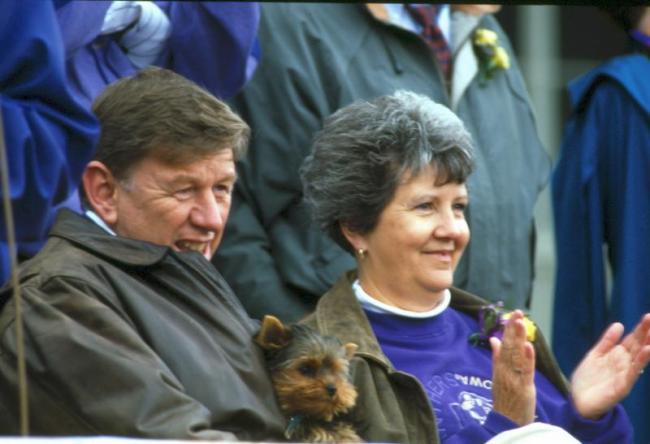
President Curris was succeeded by Robert D. Koob. President Koob and his wife, Yvonne, had seven grown children. When the Koobs moved into the President's House, they brought a little terrier named Winston Rodman with them. Winston sometimes showed up as a special guest in parades.
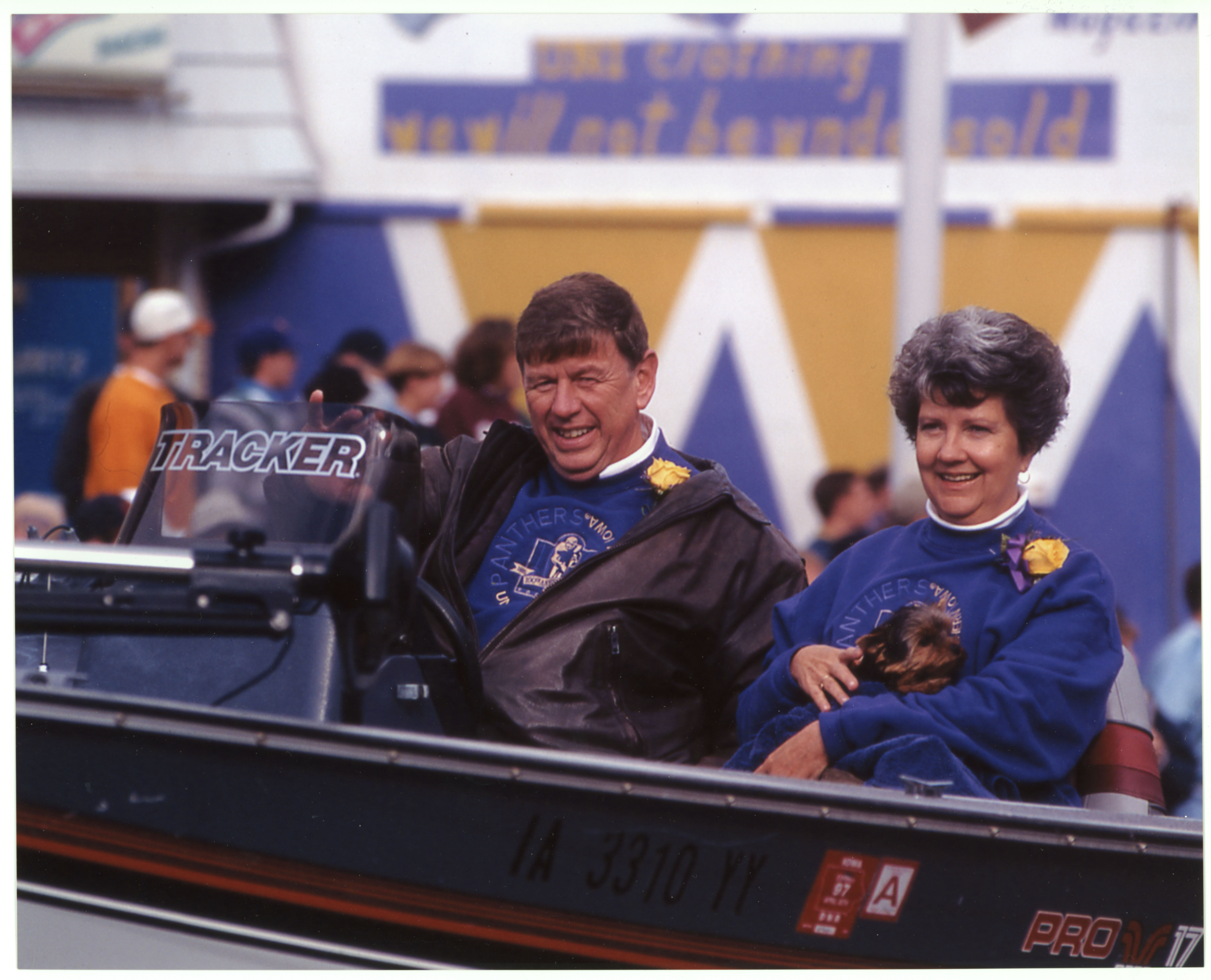
Presidents Allen and Ruud
President Koob resigned in 2006. He was succeeded by Benjamin Allen. President and Mrs. Allen had two cats, Stella and Clarence. The developers of this essay hope to have pictures of Stella and Clarence soon.
President Allen resigned in 2013. He was succeeded by William Ruud. The Ruuds had a cockapoo named Fuzzy Louis, who will certainly enjoyed his new fenced-in yard and porch.
President Ruud resigned in 2016.

Summary
While there are significant gaps in the historical record, a majority of the presidents of the University of Northern Iowa, especially over the last seventy-five years, have had pets in their campus homes. Given the presidents' hectic schedules and the need to entertain frequently in the President's House, cats and small breeds of dogs have been the most popular choices. The number and age of children in the presidents' families also played a role in the selection of pets. But even for the last several presidents, whose children were already grown when they took office, a pet has been a part of their lives. After a day of dealing with complex problems and difficult people, presidents must still find a great comfort in going home to the unconditional love of a little dog or cat.
Web page developed by Access Services Coordinator Linda McLaury, Library Assistant Joy Lynn, and University Archivist Gerald L. Peterson, with research advice from Assistant to the President Jennifer Yarrow, Nancy Price, John Price, Ann King, and Constantine Curris; scanning by Joy Lynn and Julie Williamson, July 2013; updated, July 20, 2016 (JL); photos updated and citations added by Graduate Assistant Eileen Gavin, February 4, 2025.
